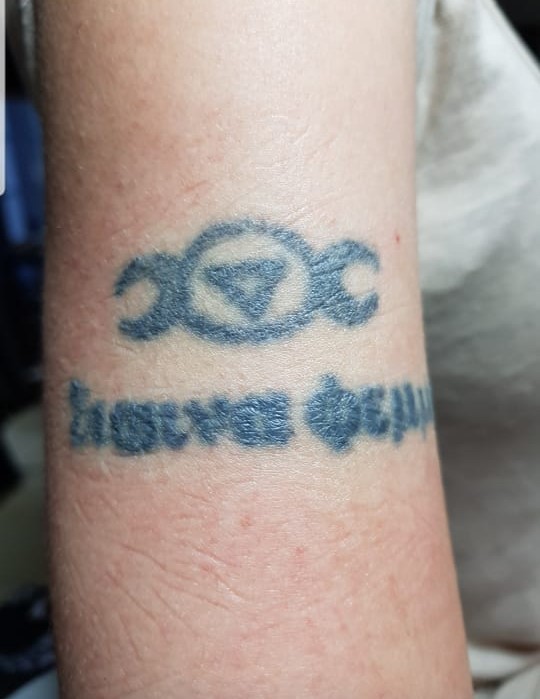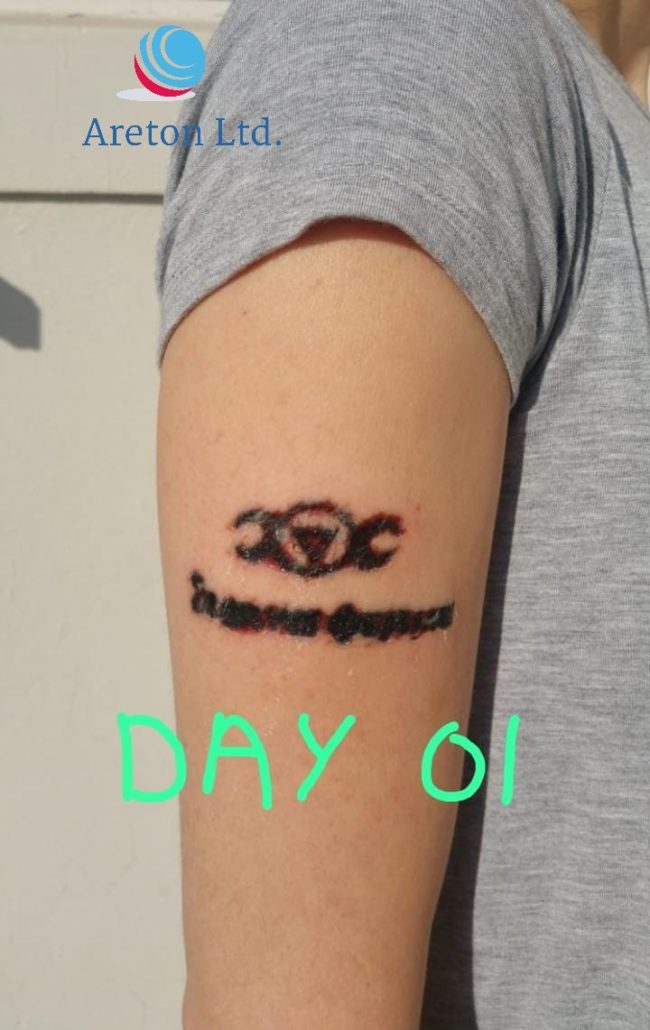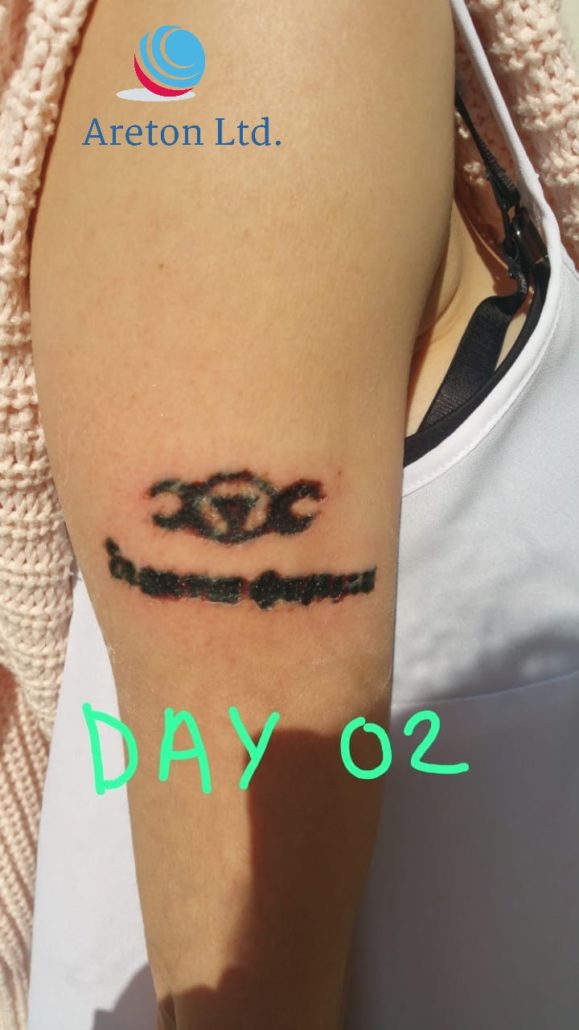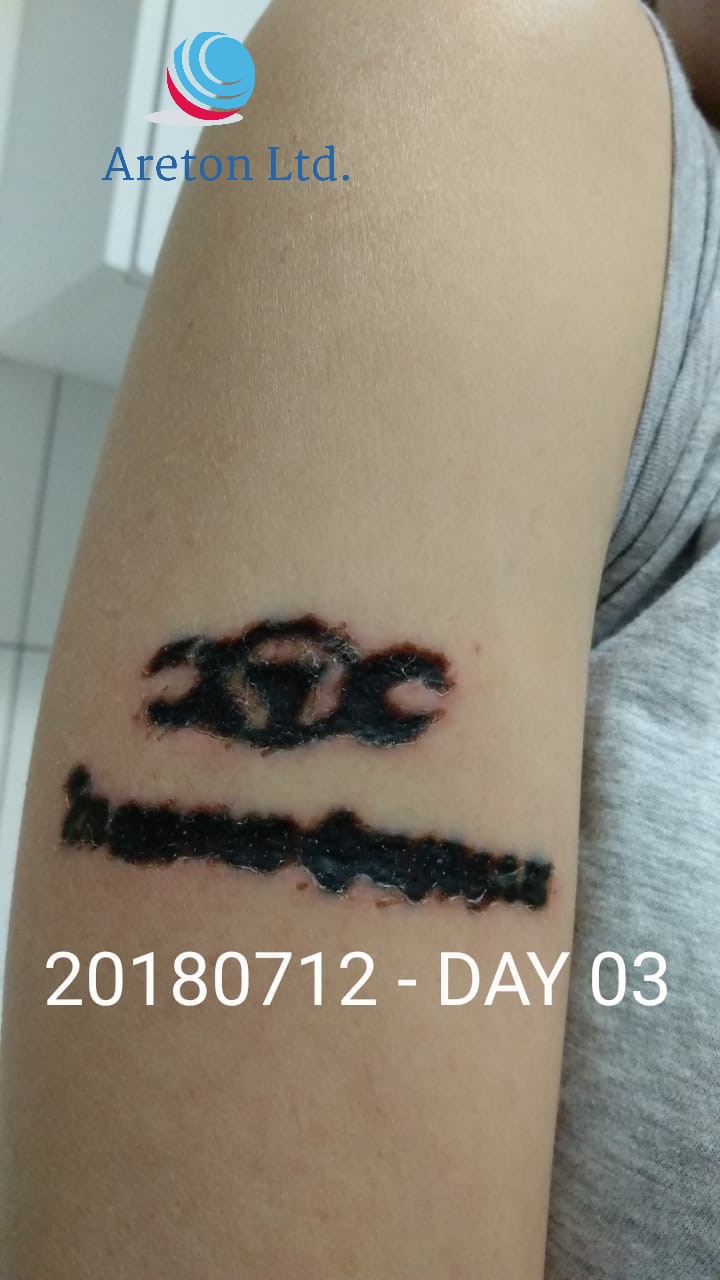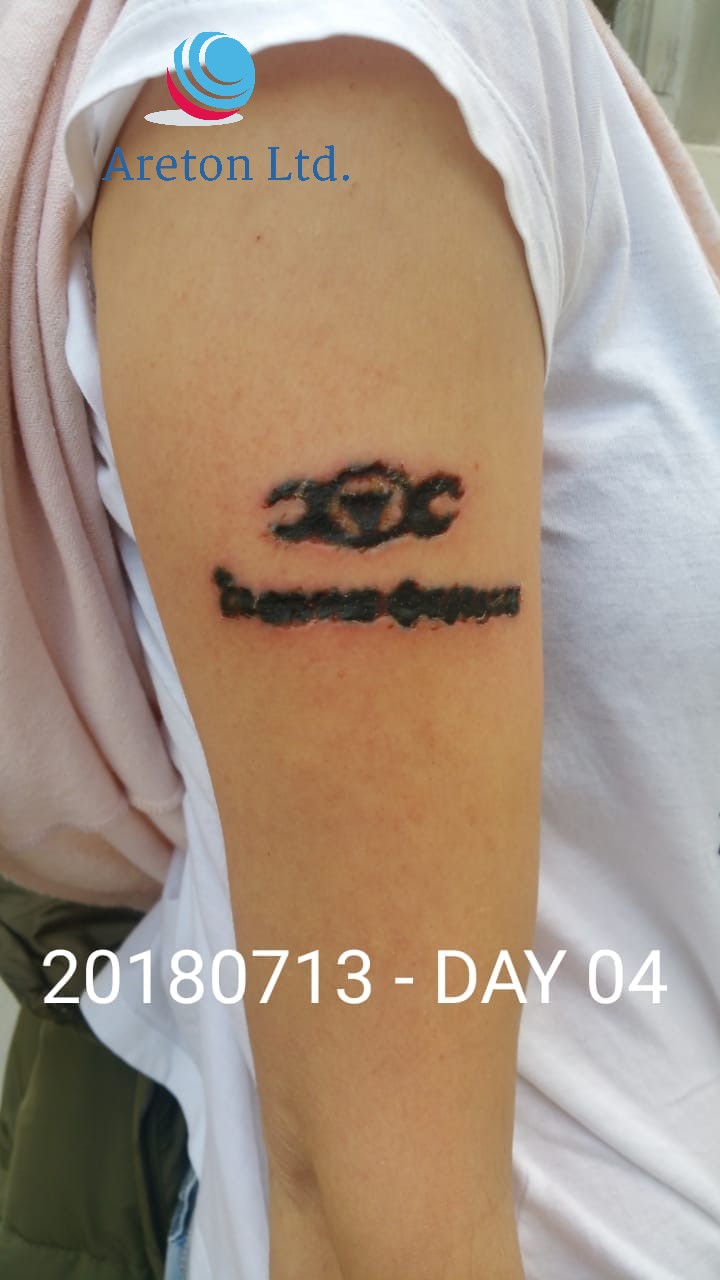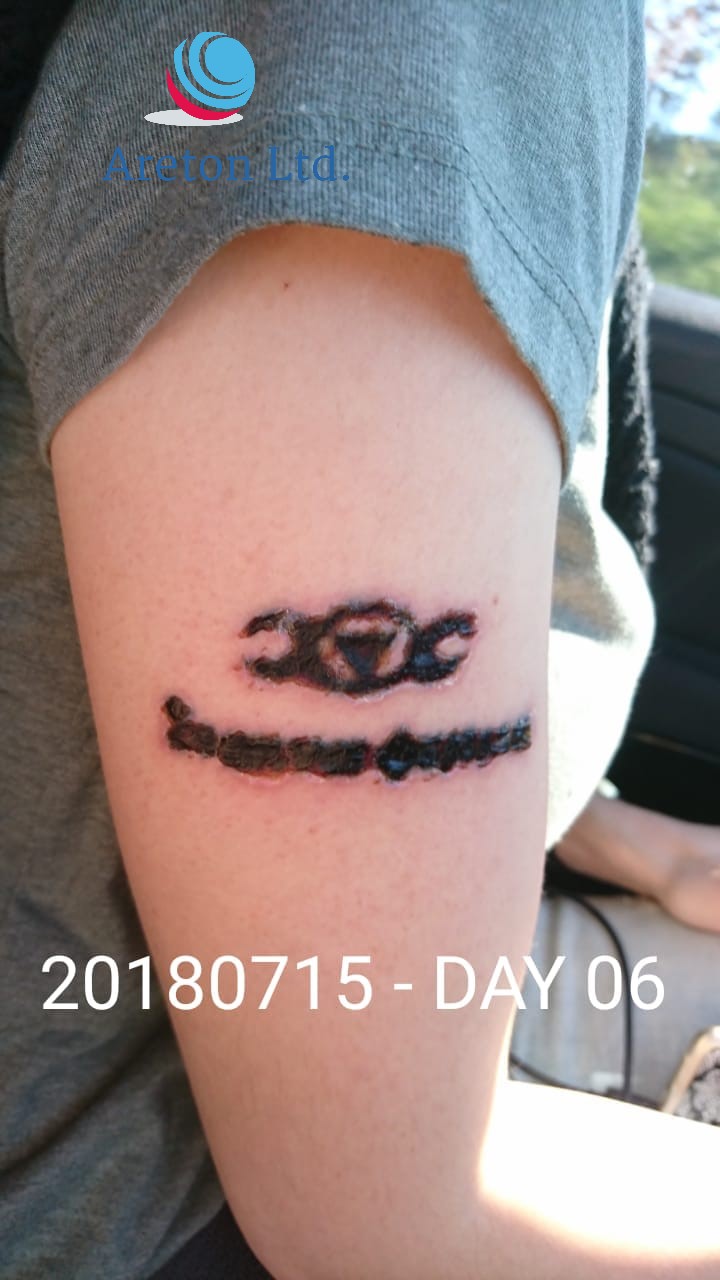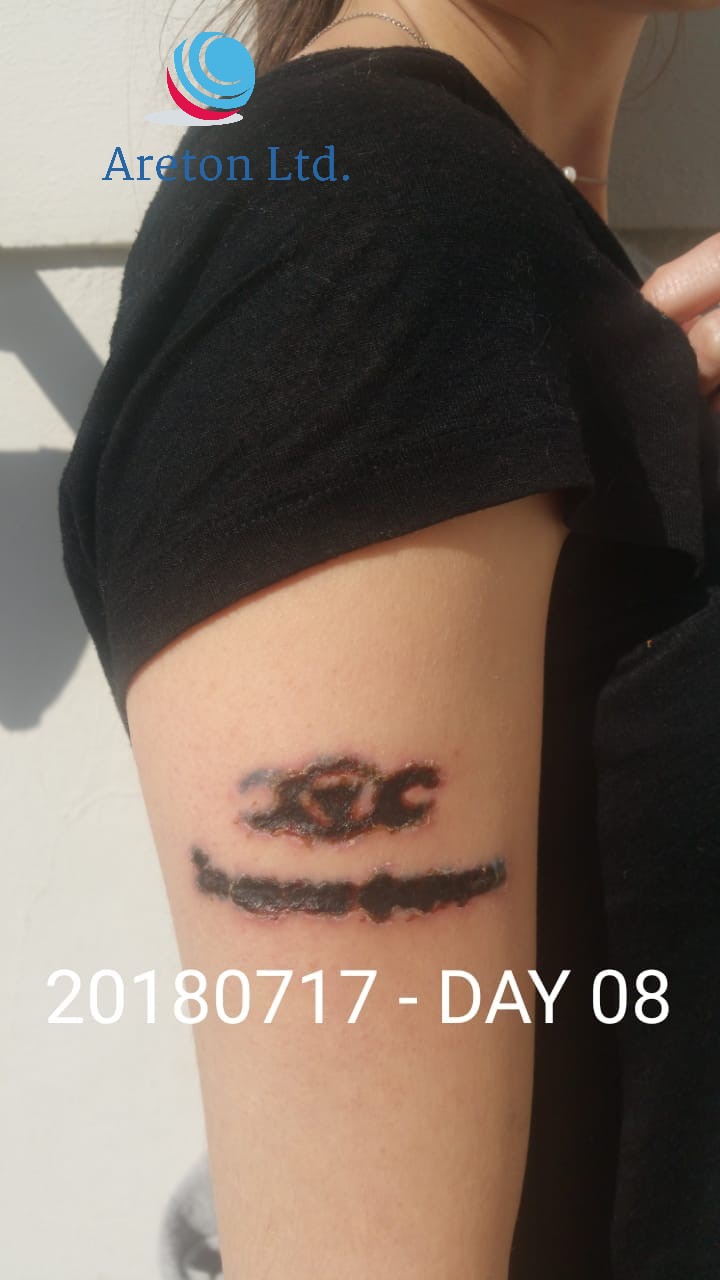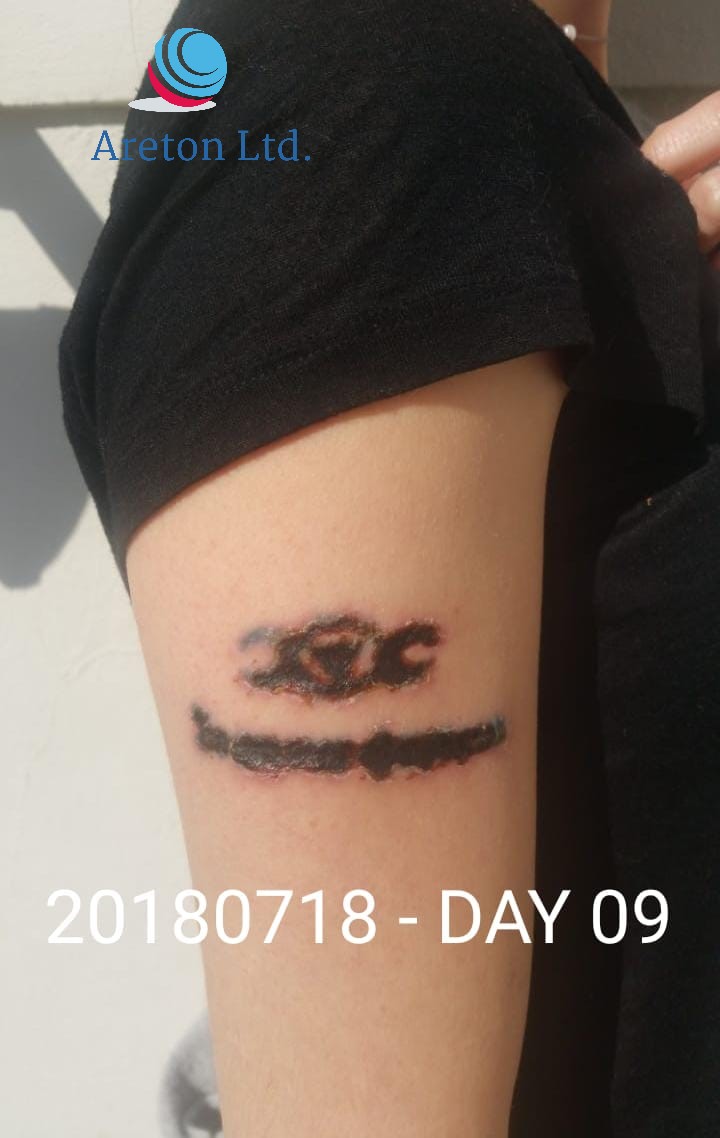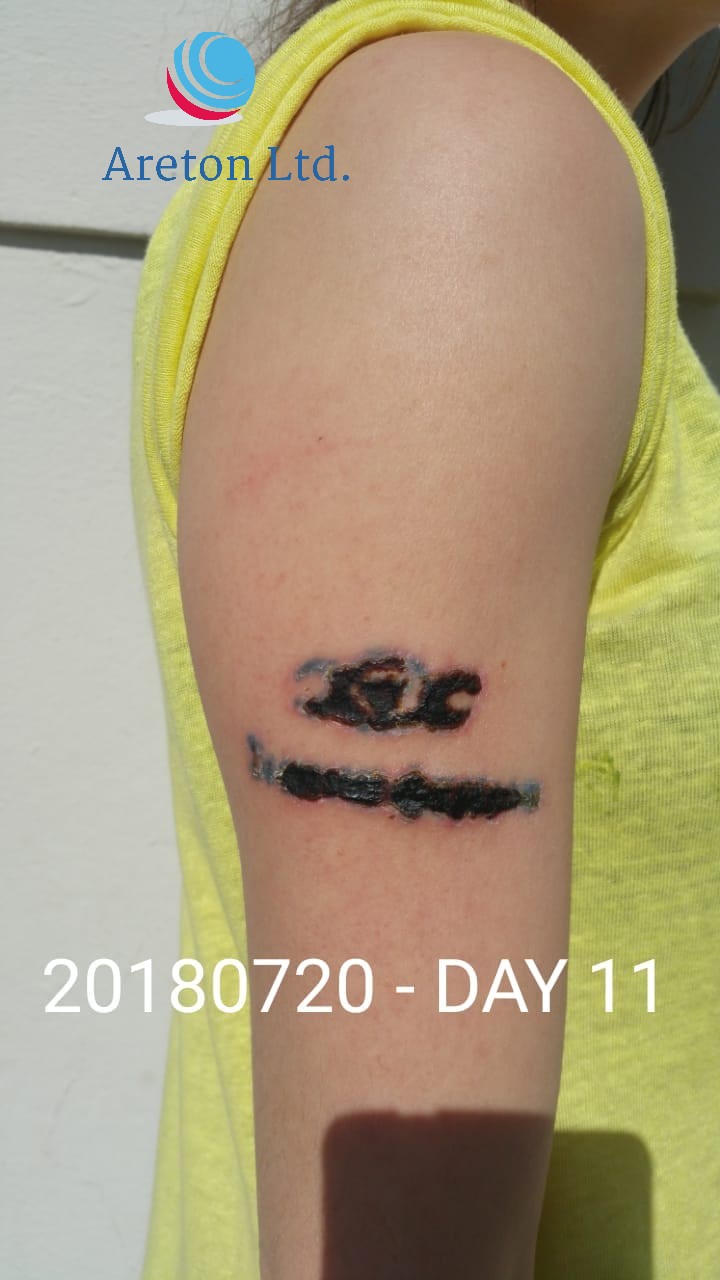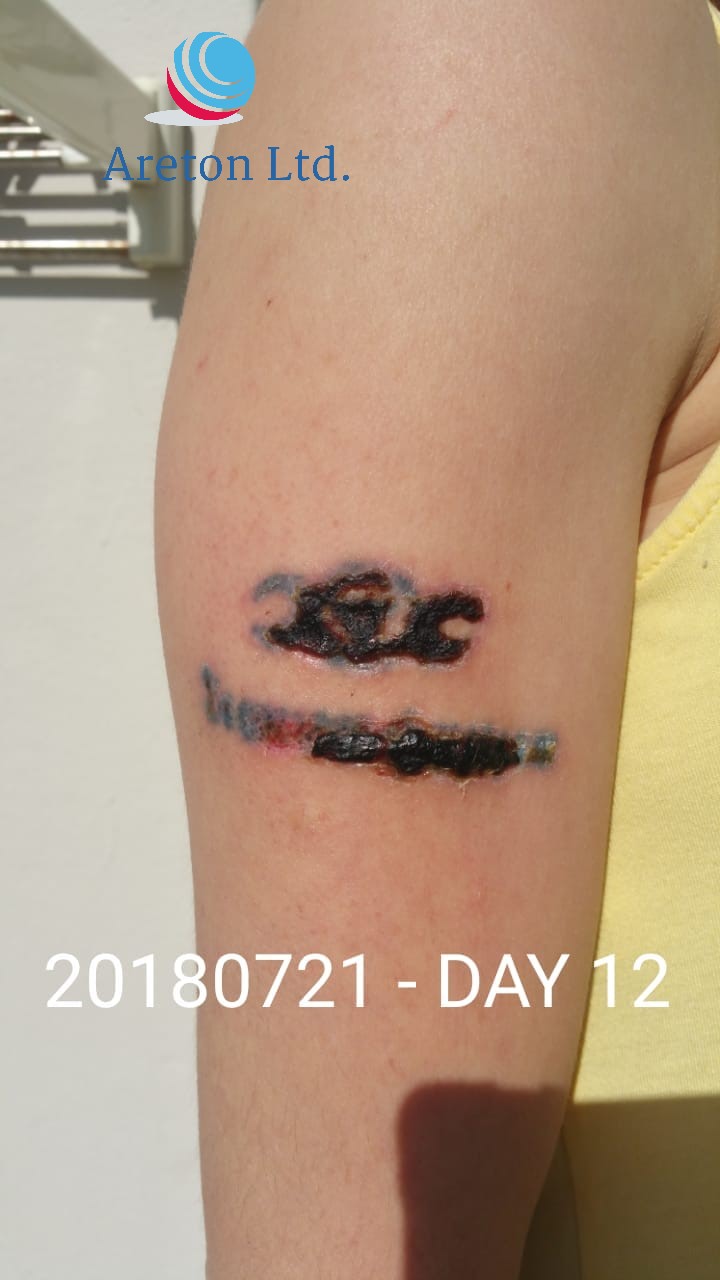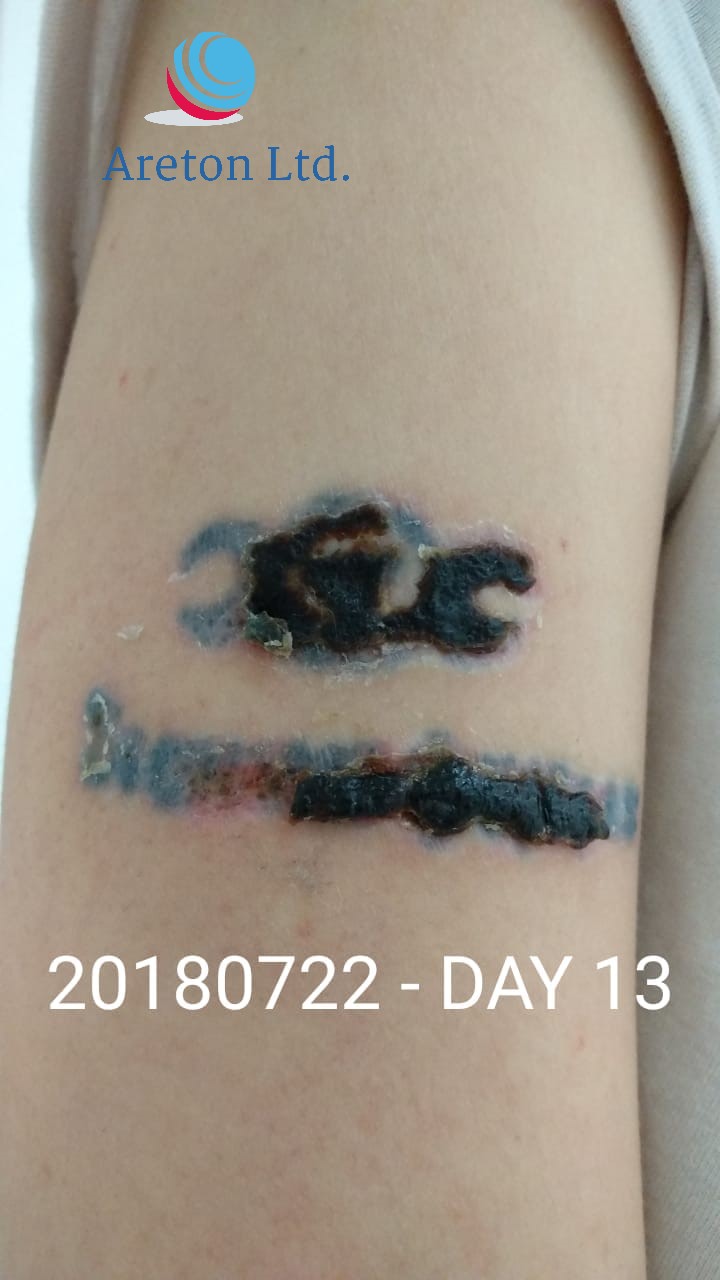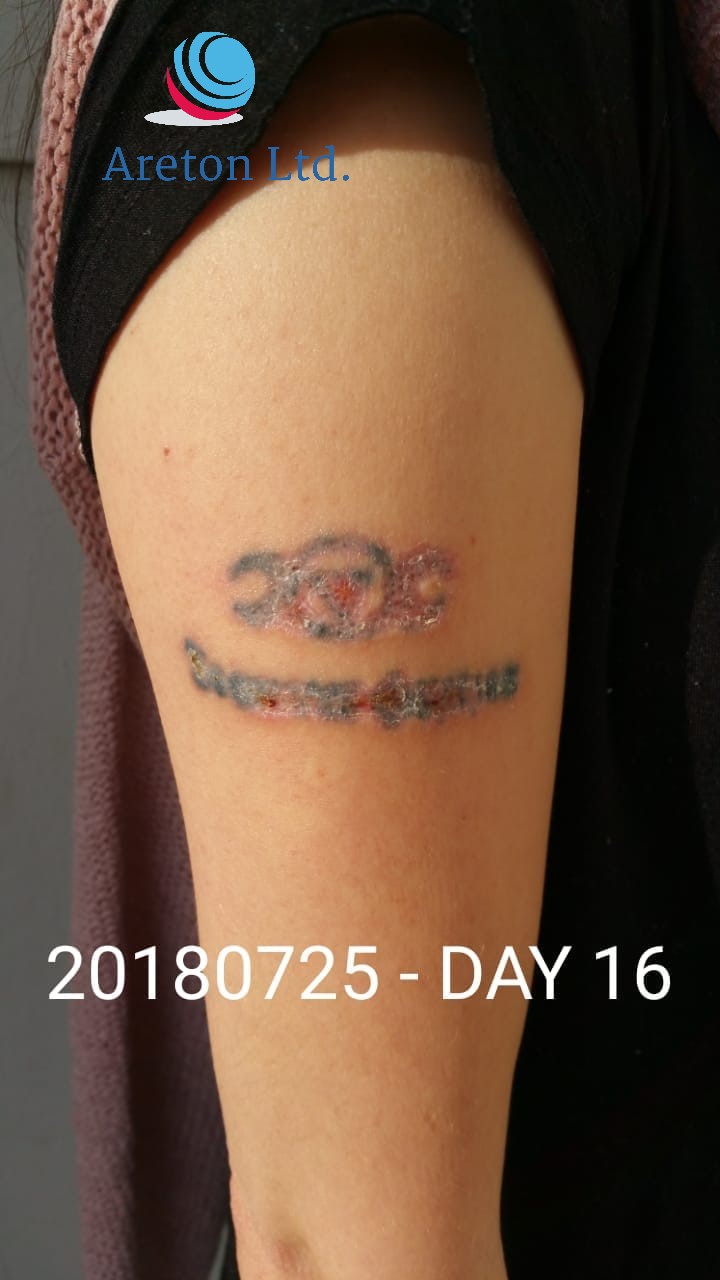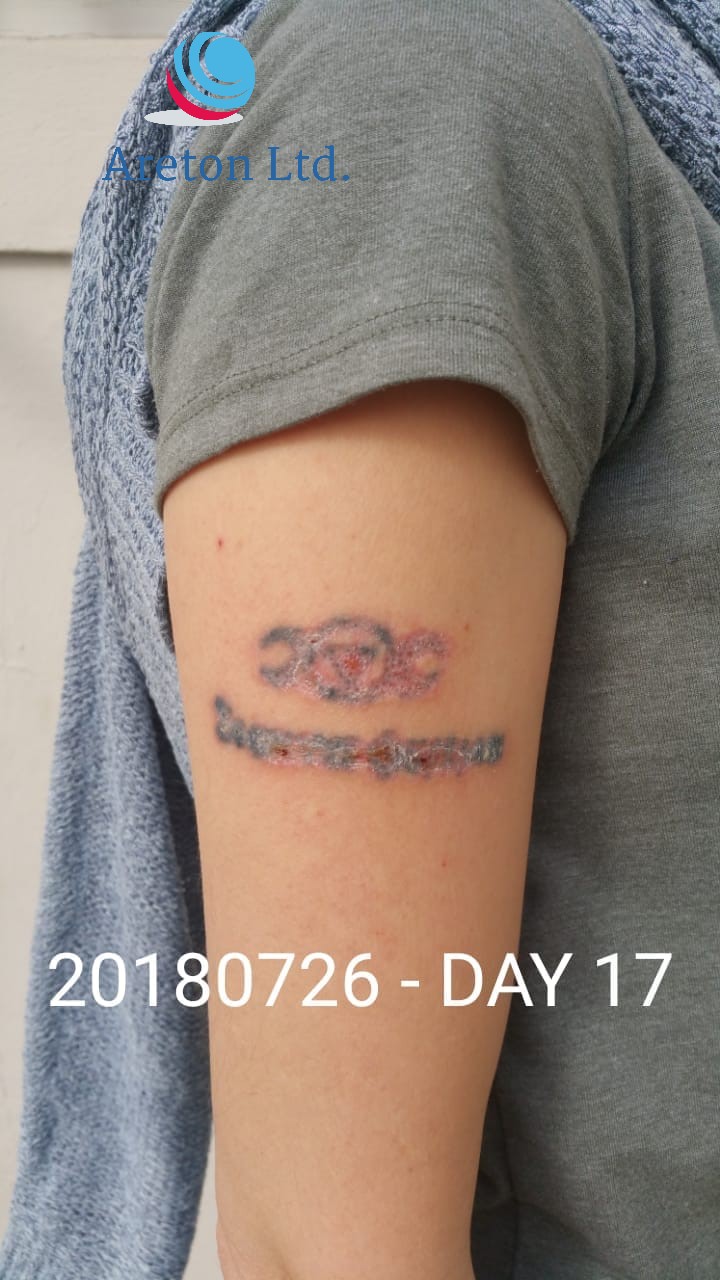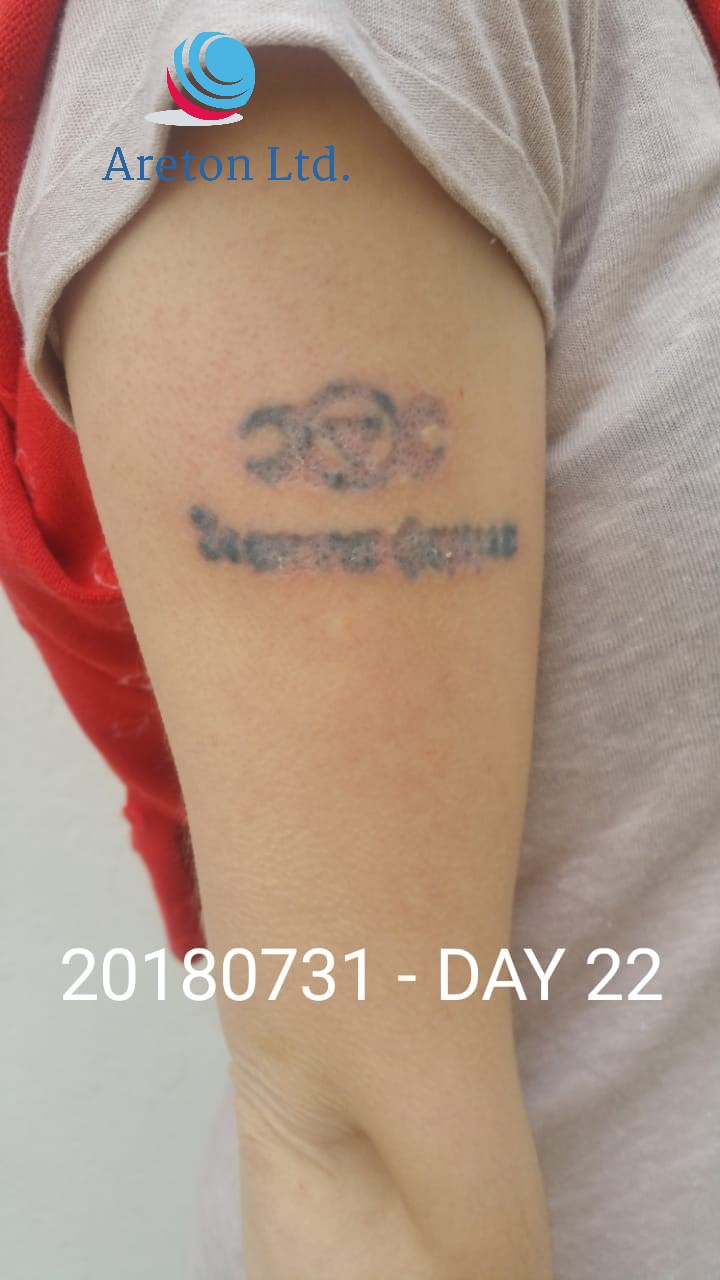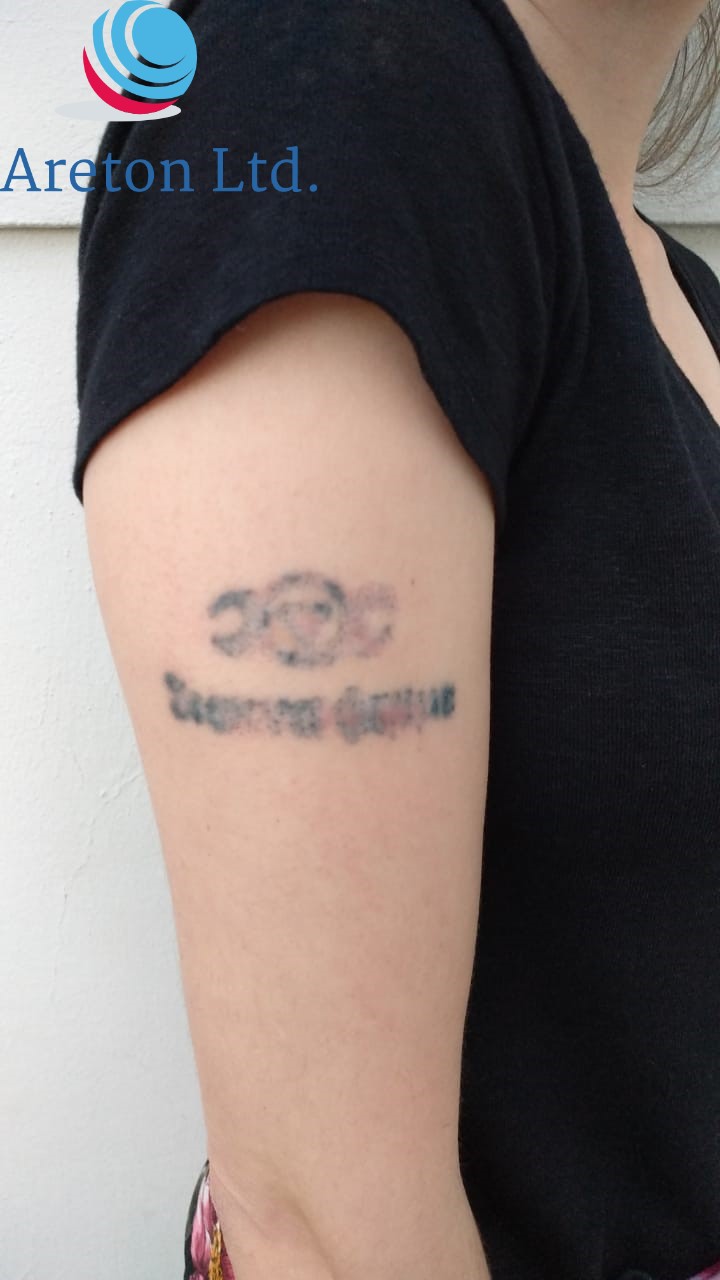[:en]
This Tattoo Fading procedure was carried out in July 2018. The subject was 30 years old at the time of the treatment. The results are shown in this case study after only one session, osmosis was applied for this treatment.
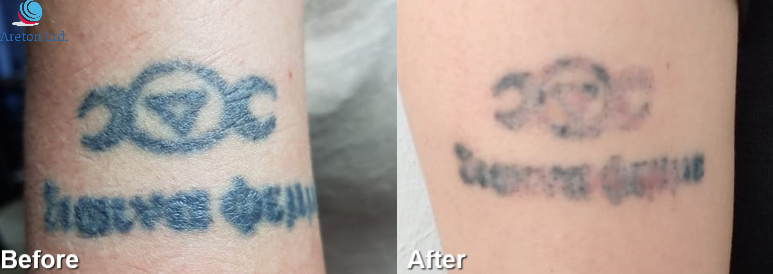
In this video will, you will see the entire treatment, a short summary of the healing progression and the results. You can limit yourself to watching the video, however, if you want to learn more about the healing progression and results, all the information is presented later in this case study.
In particular, the video shows you: The Before and After Pictures Comparison, The Before Pictures taken just before the treatment, Pictures taken during the Treatment, Pictures Taken Immediately After the Treatment, The healing progression summary and The entire procedure.
The subject was 30 years old at the time of the treatment and had never undergone any form of tattoo removal or tattoo fading procedure. A cream based numbing product was used on and around the areas of the tattoo to enable smooth removal process. The intensity of the treatment was medium - high and the power levels used was set from power level 17 - 32 using the beautyteck device. A spray mode operation was used for this particular treatment.
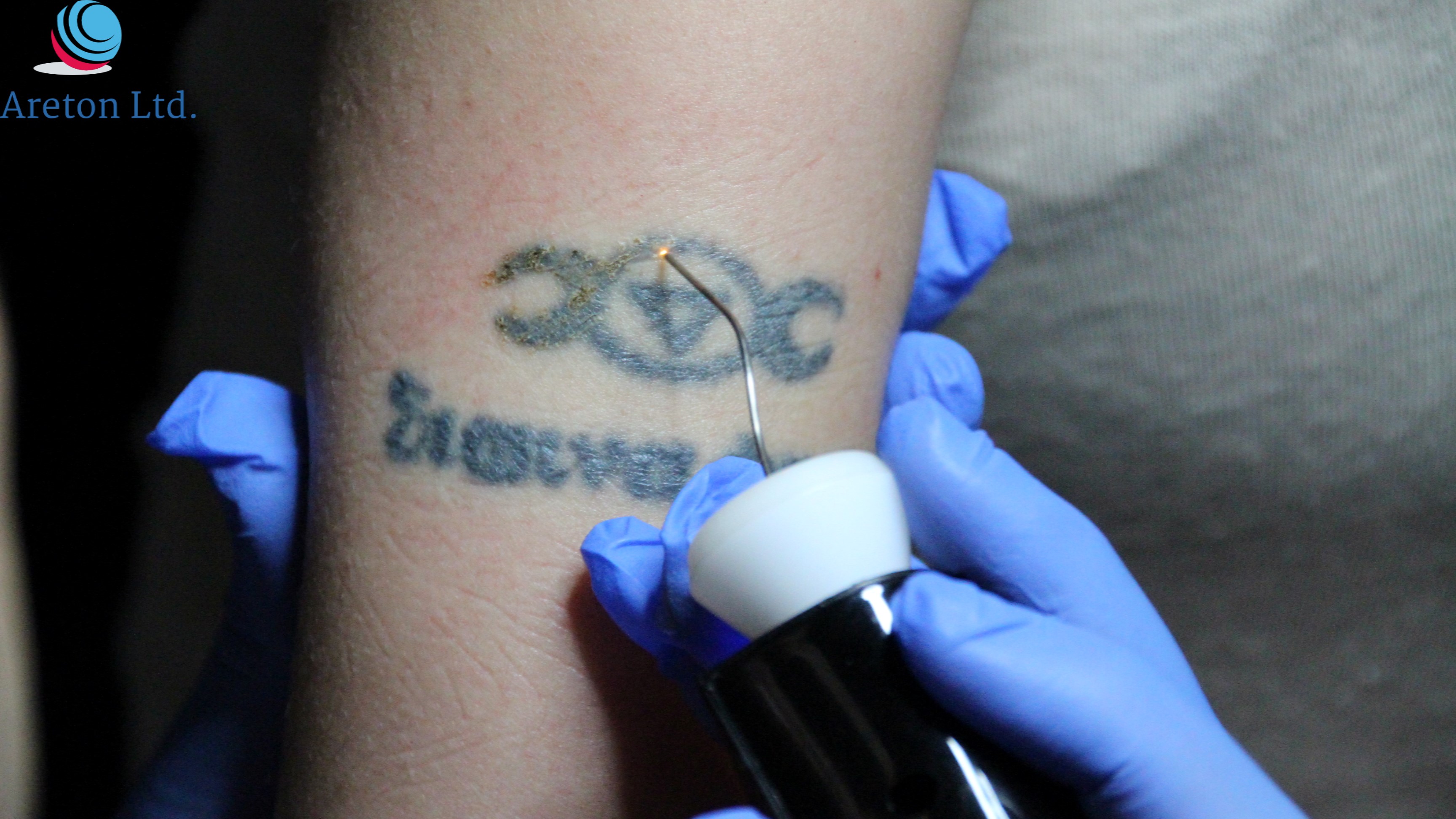
First the epidermal layer is removed to access the tattoo pigments, this is done by spraying the tattoo superficially. The spray operation is the preferred method to apply voltaic plasma for tattoo removal. In any case, it is good practice to patch test the tattoo on a small area before carrying out a full tattoo fading procedure. A patch testing is important not only for appraisal of the skin reaction to the treatment but also to estimate the number of session required to achieve the desired results, for this case study no patch testing was required as this treatment was done by a professional and managing director of Areton LTD, Andreas Russo.
It is up to the tattoo removal practitioner to decide the depth of the ablation and therefore the voltaic arcing treatment intensity. The overall treatment intensity is determined by the voltaic arcing treatment intensity, the type of osmotic treatment and the length of the osmotic application. For this case study the treatment was a high intensity treatment, power levels ranging from 17 - 32 was used using the beautyteck device. This subject had never undergone any form of tattoo removal or fading procedure, Tattoos previously treated with lasers are much harder to fade than those never treated, because some tattoo removal practitioners prefer not to treat tattoos which had previously undergone laser treatments.
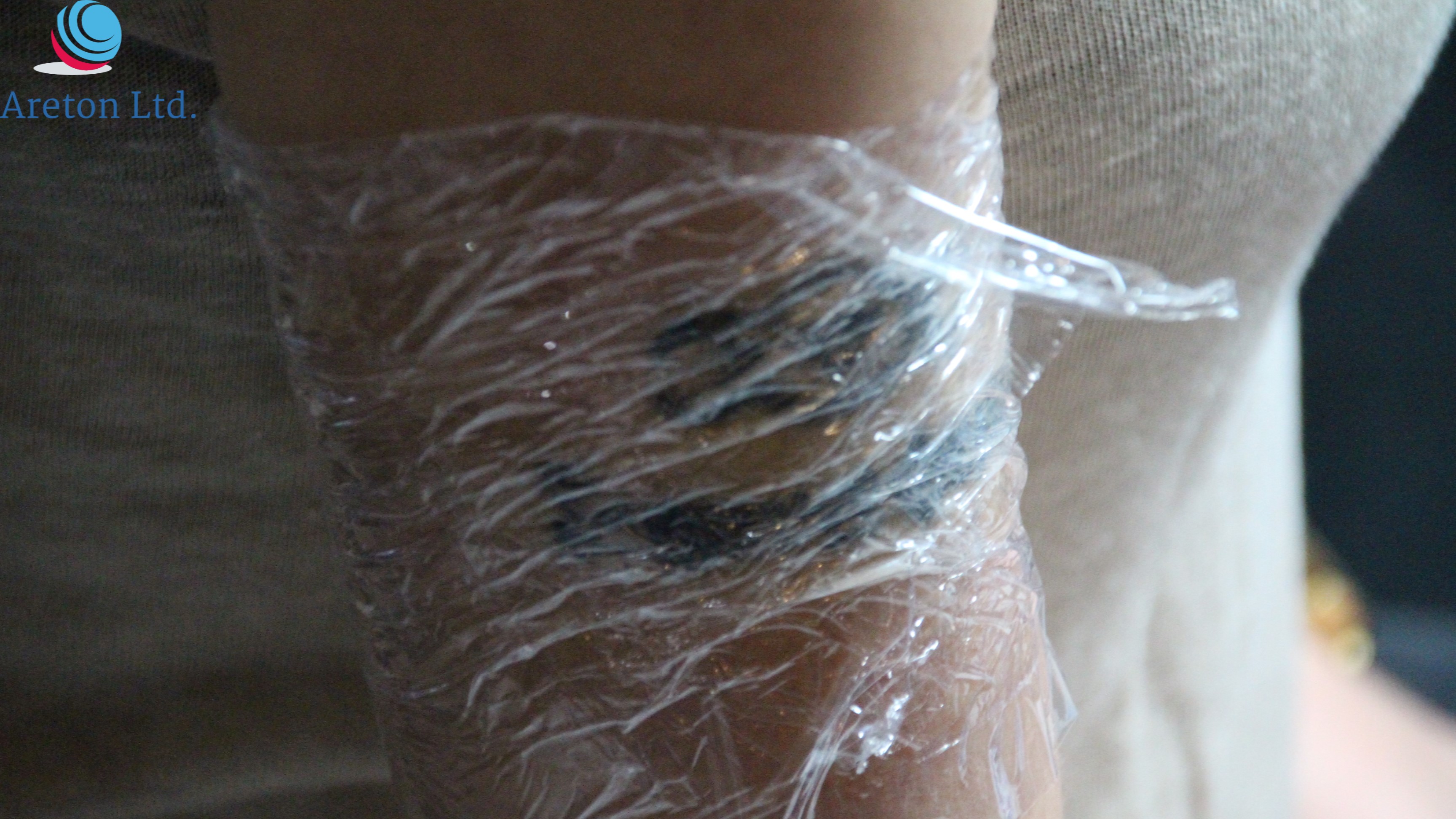
More Pictures
[foogallery id="8617"]The part was rubbed with a soft piece of cotton wool dipped in non-flammable antiseptic to remove the carbon residues, Once the epidermal layer is removed the spraying process is repeated in order to break down the tattoo pigments. Every time too much carbon is formed due to the treatment, The area is rubbed again with the cotton pad to remove the carbon residues. It is also important to spray over the borders of the tattoo.
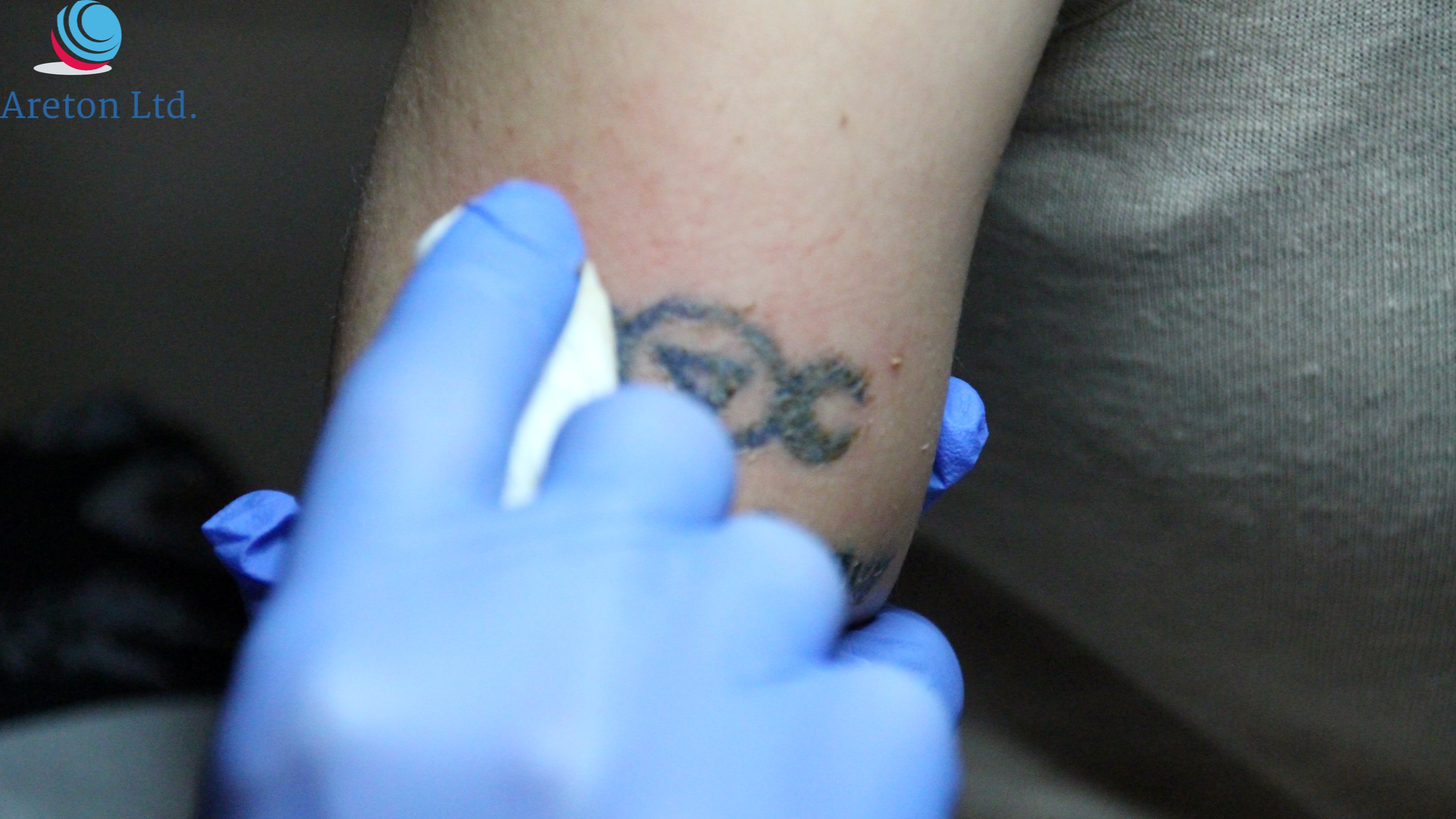
Sterile fine salt is applied on the tattoo to induce osmosis. The length of the salt application also contributes to the overall intensity of the treatment, In this case the salt was applied and left for 1 hour to induce osmosis and then later washed of completely.
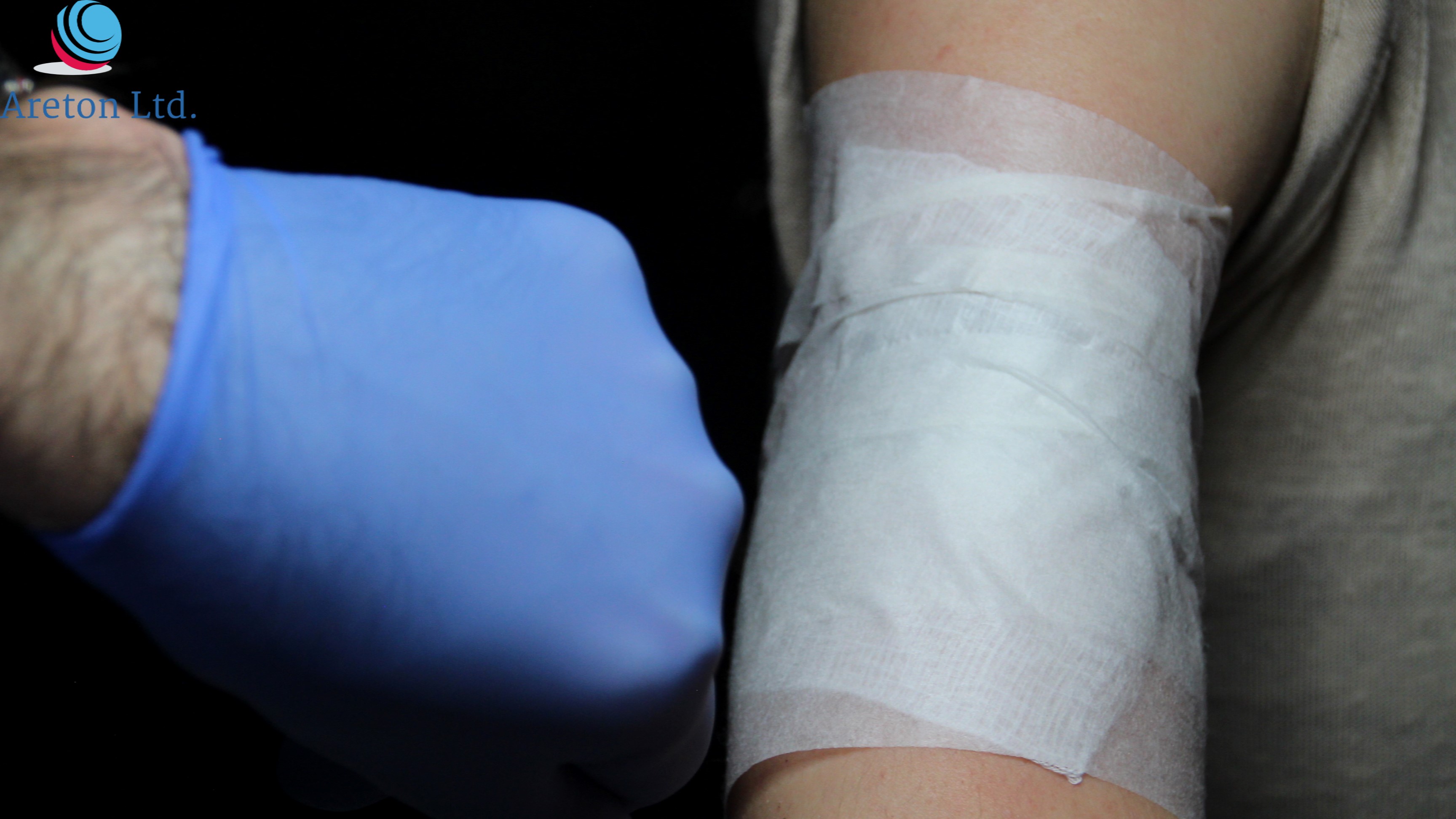
The bandage was left for a duration of 1 hour, Which is normally established by the tattoo removal practitioner, according to the desired treatment intensity. The longer the sterile fine salt is left on the treated area the stronger the osmotic intensity.
The Healing was painful for the first two weeks, but no infection, it was pain free after the scabs fell off completely. The Scabs started to fall of on 6 days after the treatment and fell off completely 16 days after the treatment. The healing progression was normal and happens in most cases with the proper aftercare. This subject had the proper aftercare, waited for the scabs to fall on their own. The pain withing the first two weeks perfectly normal for most tattoo fading case studies, The most important thing was that the treated area was not infected which enable the scabs formed to fall off quicker.
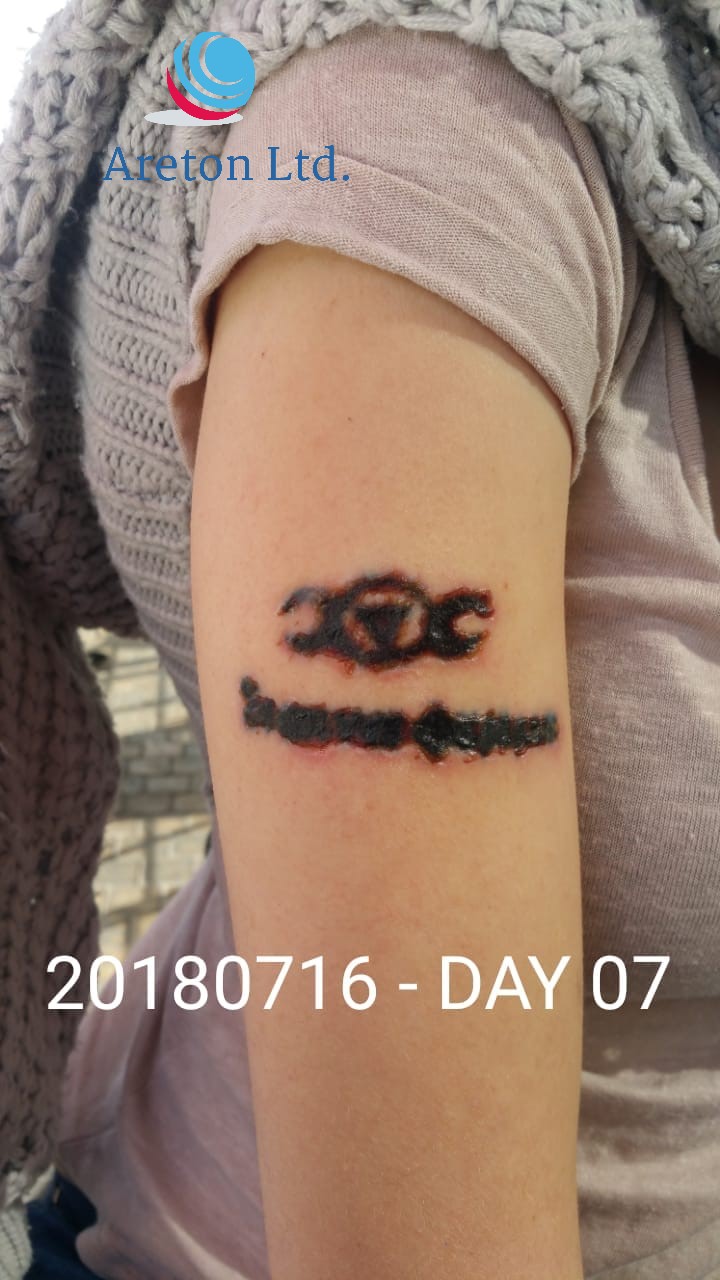
More Pictures
[foogallery id="8589"]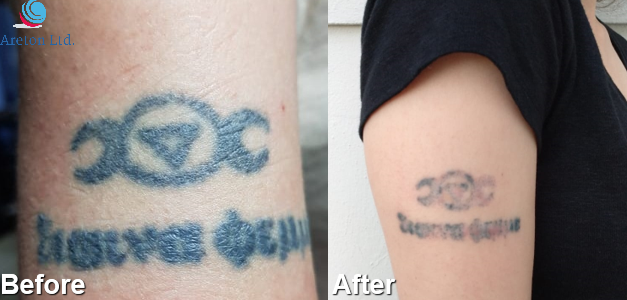
Salt was applied to the area directly after treatment, The subject used saline application daily after treatment for a week, and olive oil wax after two weeks. She also used Formulage an anesthetics aftercare product that prevents the risk of infections and bacteria.
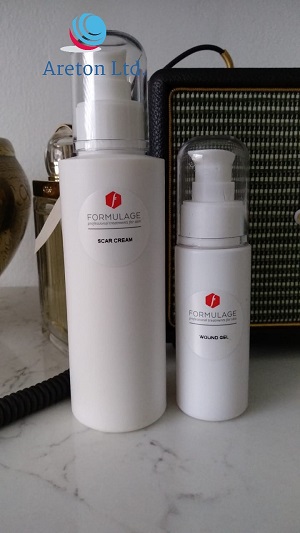
Este procedimiento de desvanecimiento del tatuaje se llevó a cabo en julio de 2018. El sujeto tenía 30 años de edad en el momento del tratamiento. Los resultados se muestran en este estudio después de una sola sesión, se aplicó ósmosis para este tratamiento.

En este video, verá el tratamiento completo, un breve resumen de la progresión de la curación y los resultados. Sin embargo, puede limitarse a ver el video. Si desea obtener más información sobre la progresión de la curación y los resultados, toda la información se presenta más adelante en este estudio de caso.
En particular, el video muestra: Comparación de imágenes antes y después, Imágenes tomadas antes del tratamiento, Imágenes tomadas durante el tratamiento, Imágenes tomadas inmediatamente después del tratamiento, Resumen de la progresión de la curación y Todo el procedimiento.
El sujeto tenía 30 años de edad en el momento del tratamiento y nunca se había sometido a ninguna forma de eliminación de tatuajes o de desvanecimiento del tatuaje. Se utilizó un producto anestésico a base de crema en y alrededor de las áreas del tatuaje para facilitar el proceso de eliminación. La intensidad del tratamiento fue media - alta y los niveles de potencia utilizados se establecieron desde el nivel de potencia 17 - 32 utilizando el dispositivo beautyteck. Se usó una operación de modo de rociado para este tratamiento particular.

Primero se elimina la capa epidérmica para acceder a los pigmentos del tatuaje, esto se hace rociando el tatuaje de manera superficial. La operación de barrido (spray) es el método preferido para aplicar plasma voltaico para la eliminación de tatuajes. En cualquier caso, es una buena práctica realizar una prueba de parche del tatuaje en un área pequeña antes de realizar un procedimiento completo de desvanecimiento del tatuaje. Una prueba de parche es importante no solo para evaluar la reacción de la piel al tratamiento, sino también para estimar el número de sesiones requeridas para lograr los resultados deseados. Para este estudio no fue necesario realizar una prueba de parche, ya que este tratamiento fue realizado por un profesional y administrado. Director de Areton LTD, Andreas Russo.
Depende del profesional de la remoción de tatuajes decidir la profundidad de la ablación y, por lo tanto, la intensidad del tratamiento de arco voltaico. La intensidad global del tratamiento está determinada por la intensidad del tratamiento de arco voltaico, el tipo de tratamiento osmótico y la duración de la aplicación osmótica. Para este estudio, el tratamiento fue un tratamiento de alta intensidad; se utilizaron niveles de potencia de 17 a 32 utilizando el dispositivo beautyteck. Este sujeto nunca se sometió a ningún tipo de procedimiento de eliminación de tatuajes ni de decoloración. Los tatuajes tratados previamente con láseres son mucho más difíciles de desvanecer que los que nunca se trataron, ya que algunos profesionales de la eliminación de tatuajes prefieren no tratar los tatuajes que previamente se habían sometido a tratamientos con láser.

More Pictures
[foogallery id="8617"]La parte se frotó con un trozo de algodón suave sumergido en un antiséptico no inflamable para eliminar los residuos de carbono. Una vez que se eliminó la capa epidérmica, se repitió el proceso de barrido ( modo Spray) para descomponer los pigmentos del tatuaje. Cada vez que se forma demasiado carbono debido al tratamiento, el área se frota nuevamente con la almohadilla de algodón para eliminar los residuos de carbono. También es importante rociar sobre los bordes del tatuaje.

Se aplica sal fina estéril sobre el tatuaje para inducir la ósmosis. La duración de la aplicación de sal también contribuye a la intensidad general del tratamiento. En este caso, la sal se aplicó y se dejó durante 1 hora para inducir la ósmosis y luego se lavó completamente.

El vendaje se dejó por una duración de 1 hora, que normalmente establece el profesional de remoción de tatuajes, de acuerdo con la intensidad de tratamiento deseada. Cuanto más tiempo quede la sal fina estéril en el área tratada, más fuerte será la intensidad osmótica.
La curación fue dolorosa durante las primeras dos semanas, pero sin infección, fue indolora después de que las costras se cayeron por completo. Las costras comenzaron a caer a los 6 días después del tratamiento y cayeron completamente 16 días después del tratamiento. La progresión de la curación fue normal y ocurre en la mayoría de los casos con el cuidado posterior adecuado. Este sujeto tenía el cuidado posterior adecuado, esperó a que las costras cayeran solas. El dolor en las dos primeras semanas perfectamente normal para la mayoría de los estudios de casos de desvanecimiento de tatuajes. Lo más importante fue que el área tratada no estaba infectada, lo que permite que las costras formadas se caigan más rápido.

More Pictures
[foogallery id="8589"]
La sal se aplicó al área directamente después del tratamiento. El sujeto usó una solución salina diariamente después del tratamiento durante una semana y la cera de aceite de oliva después de dos semanas. También usó el producto de cuidado posterior Anestetics Formulage que previene el riesgo de infecciones y bacterias.


